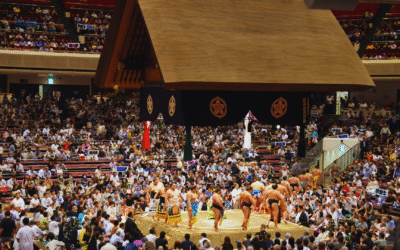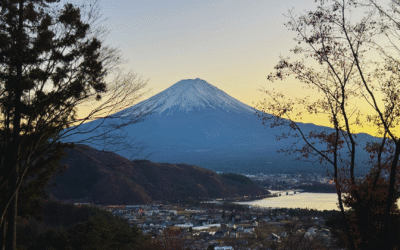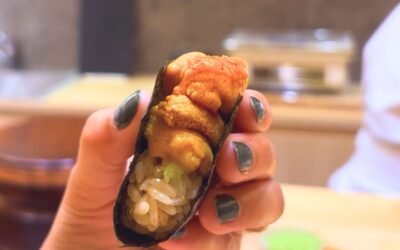Japan has numerous annual celebrations and cultural events that you do not want to miss out on. From New Year traditions to cherry blossom picnics, there is always something to commemorate. These Japanese celebrations and events offer a unique glimpse into the country’s rich cultural heritage and provide an excellent opportunity for visitors and locals alike to engage in meaningful traditions.
To enjoy all these holidays to the fullest and plan everything on your calendar for the correct date, continue reading, as this post is exactly what you need! Whether you’re planning a trip to Japan or simply want to understand more about its vibrant culture, this guide will help you navigate through the year’s main events and celebrations.
Main Japanese Celebrations and Events Throughout the Year
1st of January: New Year’s Day (元旦)

On New Year’s Day, it is customary to pay a visit to a shrine for the first time and eat an osechi meal. Kadomatsu are placed at the entrance, and Kagamimochi (mirror-shaped rice cakes) are decorated in the living room.
2nd-7th January: Matsu-no-uchi (松の内)
The dream on the 2nd of January is the Hatsuyumu (first dream). The calligraphy and painting on the same day is the Kakizome (the first writing of the New Year). On the morning of the seventh day, the last day of the pine season, people eat rice gruel with seven herbs. Putting away the pine decorations is called ‘matsuso’. In most cases, the last day of the pine season is the 7th, in which case it is removed from the night on the 6th of January to the early morning of the 7th.
11th of January: Kagamibiraki (鏡開き)
Kagamibiraki is a custom in which the Kagamimochi offered on New Year’s Day are lowered, and the Kagamimochi are eaten as Zoni or Kakimochi while giving thanks to Gods and Buddhas and wishing for good health.
15th January: Dondoyaki (どんど焼き)
Dondoyaki is an event held around the 15th of January, known as Koshogatsu. New Year’s kadomatsu, shimenawa (sacred straw ropes), and other items are brought together and burnt. Legend says it is a way of seeing off the New Year’s gods who have been welcomed on New Year’s Day as they ride their smoke vessels back to heaven. It is also believed that eating rice cakes and dumplings roasted over the flames will ensure good health throughout the year.
Second Monday of January: Coming of Age Day (成人の日)

Seijin no Hi (Coming-of-Age Day) are ceremonies held in many parts of Japan to celebrate those who have fully bloomed into adulthood during the year. This is followed by reunions at various schools and parties at home.
3rd February: Setsubun (節分)
To drive away evil spirits, people throw beans at each other, saying ‘Oni wa soto, Fuku wa uchi’ (Demons out, luck in). Another ritual is to eat ehoumaki (rolls wrapped in seaweed), which are believed to bring good luck if you face the direction of the blessing and eat the entire roll.
4th February: Risshun (立春)
Risshun is one of the 24 solar terms, and it was believed that by celebrating it, the new year of the lunar calendar would begin and spring would arrive. Japanese people sometimes celebrate the New Year by drinking alcohol and watching firework shows, although there is nothing in particular that they are supposed to do.
14th February: Valentine’s Day (バレンタインデー)
In Japan, Valentine’s Day became common around the 1970s as an occasion for women to give chocolate to men. In recent years, the custom of giving chocolate on Valentine’s Day has diversified to include not only the act of giving chocolate as a confession of love but also giving chocolate to friends and associates for social occasions and buying luxury chocolate as a reward for oneself.
3rd March: Girls’ Festival (ひな祭り)
Hinamatsuri is an annual event to wish for the safe and healthy growth of girls. Each household celebrates by displaying dolls dressed in traditional costumes and eating sweets called ‘hina arare’.
14th March: White Day (ホワイトデー)
White Day is a day when those who received gifts on Valentine’s Day return the favour. Although it is not widely known, the items given in return also have a meaning, so be careful when choosing your gift. For example, candy means ‘I love you’, cookies mean ‘you are my friend’, and marshmallows and gummies mean ‘I hate you’.
Late March: End of the Financial Year (年度末)
In Japan, the period from April to March of the following year is called a ‘fiscal year’. Personnel changes and the ending or beginning of services are often carried out towards April, when the fiscal year changes.
1st April: April Fool’s Day (エイプリルフール)
April Fool’s Day is a day when it is considered acceptable to joke around and trick people, so Japanese people tell various lies and jokes to each other among friends. In recent years, many companies have been seen using lies to promote their products through social networking and other means.
Early to Mid-April: Hanami (花見)
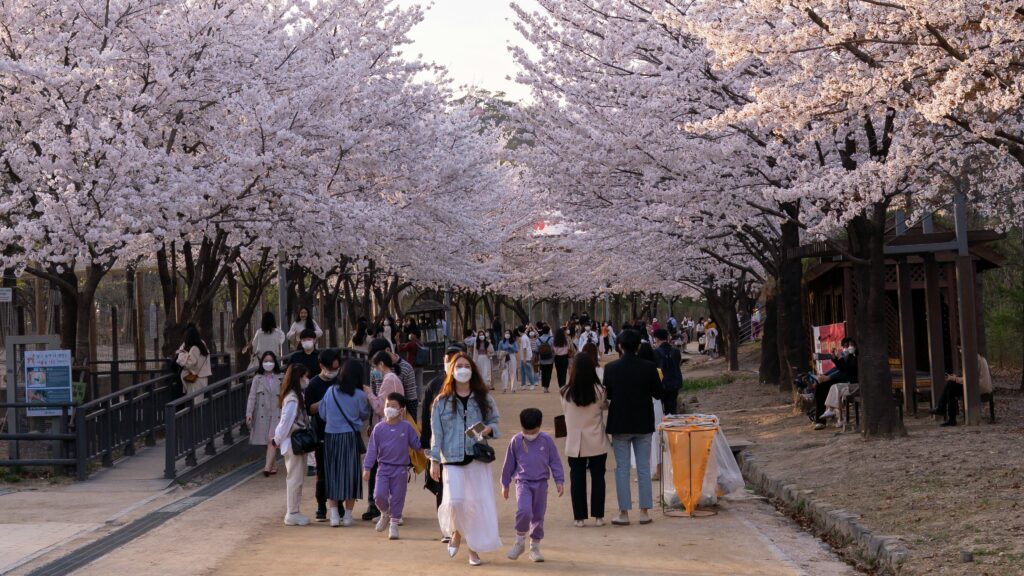
Hanami is one of Japan’s spring events. You will see Japanese people enjoying drinks and food under cherry trees in full bloom while admiring the cherry blossoms. During this period, you can visit parks with cherry blossom trees and food stalls.
29th April – 5th May: Golden Week (ゴールデンウィーク)
The period from the end of April to early May, when there are many public holidays, is called Golden Week. Many people go on leisure trips, so hotels and airline tickets tend to be more expensive during this period. Even if you don’t travel far, it’s a good idea to check out the events taking place in various places.
5th May: Tango-no Sekku, Children’s Day (こどもの日)
The 5th of May is Tango-no Sekku, an event to pray for boys to grow up strong and healthy. Families with boys celebrate by eating chimaki (rice cakes) and kashiwa mochi (rice cakes with sweet oak leaves), and decorating carp streamers and helmets.
Second Sunday in May: Mother’s Day (母の日)
The second Sunday in May is Mother’s Day. Carnations and gifts are given to mothers to thank them for their daily hard work.
Second Sunday in June: Father’s Day (父の日)
On Father’s Day, Japanese people give gifts and share a meal to thank their fathers, just as they do on Mother’s Day.
7th July: Tanabata (七夕)

Japanese people write their wishes on strips of paper and hang them on bamboo branches, praying that their wishes will come true. Many places hold festivals, especially the Tanabata Festival in Sendai, which is very famous.
Early July – Early August: Mid-Year Gifts (お中元)
It is customary to give gifts to people who have taken care of you on a daily basis to express your gratitude. The time of year varies from region to region, but gifts are generally given between early July and early August. There are various manners for giving gifts in the middle of the year, so it is advisable to check the etiquette once you have given the gift.
Mid-July to Mid-August: Firework Festivals (花火大会)
Fireworks displays are a typical summer event. Various fireworks are launched one after another, and their beauty and power are enjoyed. Fireworks displays can be found at a number of stalls. Fireworks displays are held in a variety of locations, so when summer starts, check to see if there is one nearby.
13th – 16th August: Obon (お盆)
Obon is a time to pray for our ancestors. It is believed that ancestors come from the Pure Land to visit us, and many Japanese return to their parents’ homes to welcome their ancestors (i.e. go home), making it a very busy time of year for transport. They prepare for the welcome by decorating Bon lanterns and making spirit horses out of aubergines and cucumbers.
9th September: Chou-you-no-Sekku (重陽の節句)
Also known as the Chrysanthemum Festival, people offer chrysanthemum flowers and drink alcohol with chrysanthemum petals floating in it to wish for long life. As it also coincides with the autumn harvest, chestnut rice is sometimes eaten to represent the autumn harvest.
September: Otsukimi, Moon-Watching (お月見)

Otsukimi is the viewing of the moon, and generally refers to the night of the 15th of August on the lunar calendar. The moon on the night of the fifteenth lunar month is called the ‘Mid-Autumn Moon’, and this time of year has long been regarded as a good time to view the moon.
September to Mid-October: Jugoya (Fifteen Nights) (十五夜)
In the old calendar, the 15th of August was the day of the full moon, but this changes every year in the new calendar. On this day, it is common to pray for a good harvest while gazing at the full moon. When viewing the full moon, silver grass and moon-viewing dumplings are offered.
Around 17th – 24th September: Silver Week (シルバーウィーク)
Silver Week is the common name for the consecutive autumn holidays. It is named this way because the May holiday is called Golden Week and the Respect-for-Senior-Citizens Day falls in between. However, in some years, depending on the sequence of the days, there may not be a long holiday weekend and there may not even be a Silver Week.
31st October: Halloween (ハロウィン)
Originally an event to celebrate the harvest and drive away evil spirits, Halloween in Japan has become more about dressing up in fancy dress in recent years. The content of the costumes is not only based on the theme of evil spirits, but there is a wide range of variations. In the Kanto region and other parts of Japan, costume parades are held in which anyone can participate.
15th November: Shichi-Go-San (七五三)

This event celebrates the growth of children who have reached the ages of seven, five, and three. Children of these ages dress up in traditional ‘sunshiny kimono’ and visit shrines for prayers. After visiting the shrine, they receive a candy called Chitoseame.
13th-20th December: Oseibo, Year-End Gifts (お歳暮)
At the end of the year, people give gifts to those who have taken care of them as a token of their gratitude. This gift is called otoshioge (year-end gift). The time of year varies from region to region. Also, as with the mid-year gift, there are various manners, so check the age at which you give the gift.
22nd December: Winter Solstice (冬至)
There is a custom to eat pumpkin and take a yuzu (citron) bath. Kabocha is highly nutritious and the yuzu bath is a symbol for praying for long life, as it promotes quite a lot. Both pumpkin and yuzu are available in supermarkets at this time of year, so why not give it a try?
24th December: Christmas Eve and 25th December: Christmas Day (クリスマス)
In Japan, it is common for Santa to bring presents to children on the night of the 24th of December and for them to eat cake and chicken on the 25th of December. However, one difference from overseas is that Christmas is more often spent romantically with a partner than with family. It is also not a holiday in Japan, so working people work during the day and party only at night.
31st December: Omisoka (New Year’s Eve) (大みそか)

The last day of the year is called ‘Omisoka’. On New Year’s Eve, people eat New Year’s Eve soba (buckwheat noodles) while listening to the bells of the New Year (the bells that get tired at temples). As soba is a long noodle, the wish is made that the person will live a long and healthy life.
Embracing Japanese Traditions
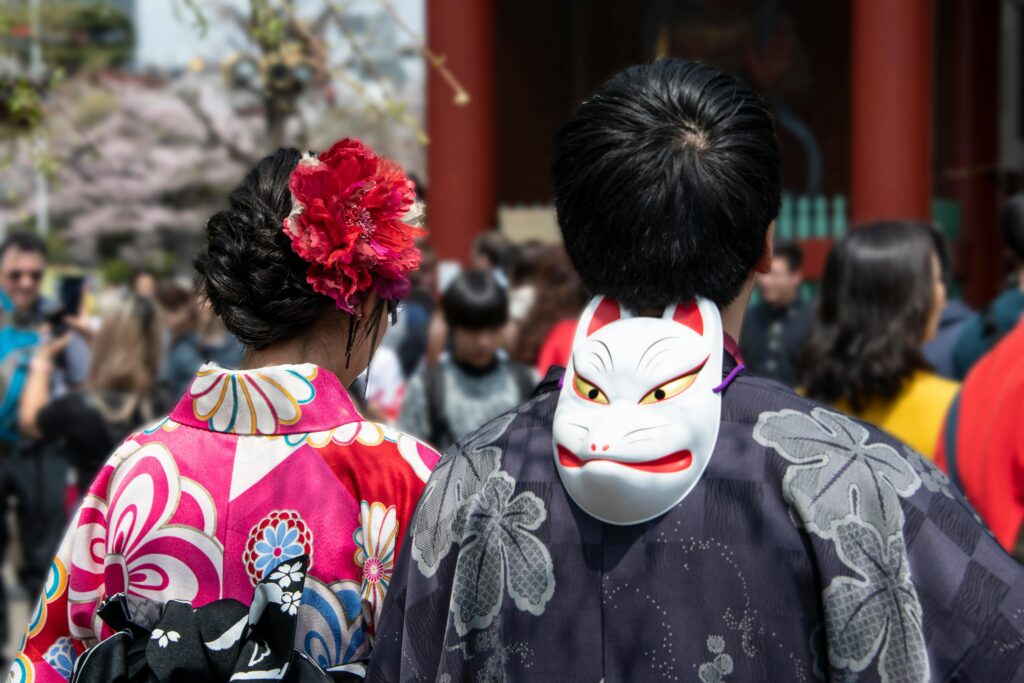
Participating in Japanese celebrations and events offers a unique and enriching experience, providing a deeper understanding of Japan’s cultural fabric. These events are not only entertaining but also deeply rooted in tradition, offering insights into the values and history that shape Japanese society.
By planning your visit around these celebrations, you can immerse yourself fully in the local culture and create unforgettable memories. Whether it’s the solemnity of Obon, the exuberance of Hanami, or the joy of New Year’s festivities, each event offers something special.
Japan’s cultural calendar is packed with activities that cater to all interests, from historical rituals to modern celebrations. As you participate in these events, you’ll gain a new appreciation for the customs and traditions that make Japan unique.
If you have any questions or need further information about these Japanese celebrations and events, feel free to send us a DM or reach out to us on any of our socials. We would be happy to help you make the most of your cultural exploration in Japan!





